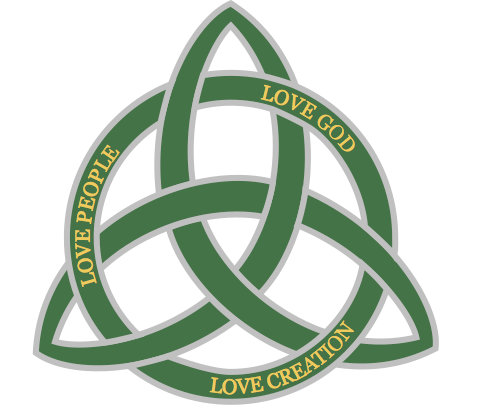Wisdom from the Winter Garden
Photo Credit: Ryan Klinck Seed starts at Haw Creek Commons
Wisdom from the Winter Garden
By Kate Rudd
The winter garden is not beautiful to the untrained eye. No more neat, vibrant rows of lettuce, carrots, chard, squash, and tomatoes. No colorful display of flower blossoms or insects abuzz. No neighborhood children running to pick carrots—exclaiming over how a radish grows. Nothing but empty lines, sad perennials. The intelligent gardener uses winter to enrich their soil with a diverse jungle of cover crops to nurture microbial activity, replenish nutrients depleted from last season, and build the soil by growing then composting organic matter. These techniques significantly enhance next season’s potential, but in winter this looks like chaos that doesn’t fill harvest baskets. It is generally barren, decaying, messy. It seems meaningless and a little depressing.
I wonder if this perspective is absorbed from our culture. We are trained to stubbornly oppose natural cycles. We work long hours regardless of the season. We pressure ourselves into extracurriculars or social engagements when rest may be more natural and healing. We are taught to avoid aging, death, loss, and bury them (ironically) like they don’t exist. Always push forward. Always make sure you’re earning your space on this planet. We bend our will, activity, even our sense of self-worth or others’ worth to the almighty god of production. Things we can have, hold, count, quantify, measure, check-off, or add to a resume easily become the things we use to create a rubric for value. There’s nothing inherently wrong with these things. Many comprise an essential “Spring of our lives,” the kinetic beauty that keeps blood pounding our veins and faces smiling.
This is only part of the cycle of life. The easier part. The concrete part. The part we are eager to tell stories about. There are other cycles that are necessarily part of the whole circle of life. Some are invisible like the magic of photosynthesis, the sun’s energy combining with water and oxygen to create food in plant cells, and, therefore, food for insects, animals, and people. Or the roughly two billion microorganisms swirling in every tablespoon of soil, constantly metabolizing the ground under our feet, enabling every single living thing to live: the unseen mitochondria of the world churning without recognition or acclaim, working like an artist who can’t be pulled away from their work—their art that fuels the planet.
Then there are darker circles. Things die and we grieve. Sometimes it is almost impossible to let go. Things age and decay. It makes us uncomfortable and we diminish their value. In the garden we see death and decay become compost, a celebration. It’s not a pretty one but it’s a healing one. Nothing is wasted. Everything becomes new life in the next season. Eternity becomes something we can get our minds around. I wonder how our lives could shift if we would embrace cycles and catabolize our experience into spiritual compost.
We have an extreme aversion to loss. “The garden was so beautiful, now it just looks sad and dead!” I beg to differ.
I don’t like looking at the garden as much in winter. Sometimes I grieve. I miss the beauty and abundance. I miss the compliments about how lovely it looks too. Very few look at resting soil, compost, or ragtag cover crops and profess their admiration. It’s more like a resigned, “Well, it will be a garden again in spring.”
It’s a garden now.
It’s only a garden if it’s a garden now.
It’s resting from our human personal interest but alive with invisible purpose all its own. Like Sabbath or a warm bath with a cup of tea and silence.
Physics describes energy in two forms. Kinetic energy is the energy of motion. For example, a red ball rolling. Passive energy is stored energy. It is gathered and abstract, less exciting, like Sabbath or your immune system or the winter garden. Yet, passive energy is the critical determinant behind kinetic outcome. The mass of the red ball and the force behind it determines the speed and distance that red ball moves. If you diminish (or neglect) one form of energy you diminish the other. What if we applied this to our personal and spiritual lives? What if we have the potential to grow our spiritual potential energy, expanding our creative mass and capacity through being not producing. Do we have the long-range thinking to invest in what seems empty, quiet, and still? To “be still and know” in that mystery, understanding this dormancy will expand future possibility?
The winter garden is an invitation to embrace the ebb and flow of our natural and spiritual world.
To sit in the uncomfortable, unquantifiable space of emptiness, decay and lack of harvest in our own lives. It is here we can begin the practice of treasuring the invisible, even the loss of something we cherish, trusting our investment in non-manifestation seasons will increase our passive capacity so we can humbly grow into something kinetically stronger than the year before.

